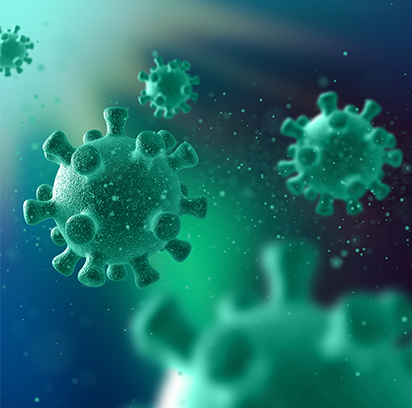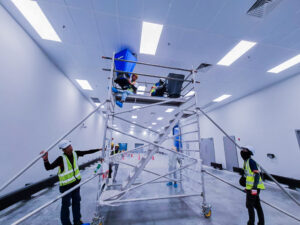The coronavirus previously dubbed as the new coronavirus originated in Wuhan, China, in late December 2019, and led to a global outbreak that impacted several cities in China and most of the rest of the world. Coronavirus Disease-2019 has been named as the disease or known as Covid-19 declared by World Health Organization (WHO) on February 11, 2020. There is a low to moderate mortality rate (approximately 2% -5%) associated with COVID-19, a contagious illness. This infection can be transmitted through direct contact or by droplets.
Respiratory droplets can infect the mucosae (or mouth and nose) or the conjunctiva (or eyes) of someone who is in close proximity (within 1 m) with someone who is experiencing respiratory symptoms, such as coughing or sneezing. Additionally, the transmission may occur by direct contact with fomites that are in the immediate vicinity of the infected individual. Thus, the COVID-19 virus can be transmitted from humans to objects that they touch or from objects that they encounter surfaces within the local environment or persons with whom they come into contact (e.g., stethoscope or thermometer).
However, on 11 February 2020, the International Committee on Taxonomy of Viruses (also known as the ICTV) formally established the name of SARS-CoV-2, which is also known as severe acute respiratory syndrome coronavirus 2 (SARS-CoV-2 or SARS-CoV2).” Studies have shown in this new variant of the virus may be airborne as well, in the form of aerosols, which could transmit the infection.
What is an airborne transmission? Airborne transmission of an infectious agent is characterized as the dispersion of a virus or bacteria that remain infectious after being suspended in the air over great distances and for extended periods of time.
There are many studies demonstrated by aerosols researchers and scientists that have shown the positive relationship between airborne particles and coronavirus. According to the studies done by local researchers, from Universiti Kebangsaan Malaysia (UKM), results showed that the viruses can remain suspended in the air for a longer period of time in an enclosed space. As air particles can be referred to as aerosol, they can travel farther than 1 meter (long-range). According to the second study done by these researchers, enclosed facilities with no fresh air circulation and air-conditioning operations that recycle the same air can facilitate virus transmission via aerosols.
Pretty sure this information shakes your consciousness and you might wonder how it can affect people and what ways of prevention you should take to protect yourself or the building occupants? Subscribe to read more on the elaborations of how it affects people and surely we will give some good tips on preventing it from happening!




